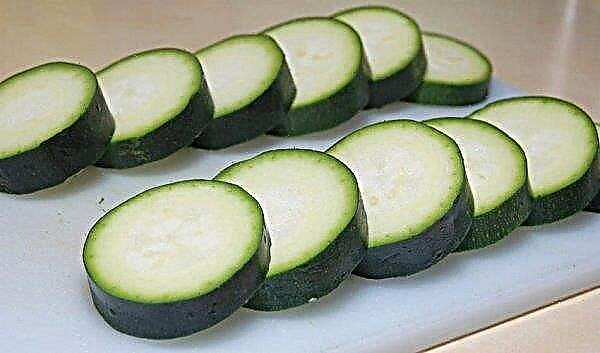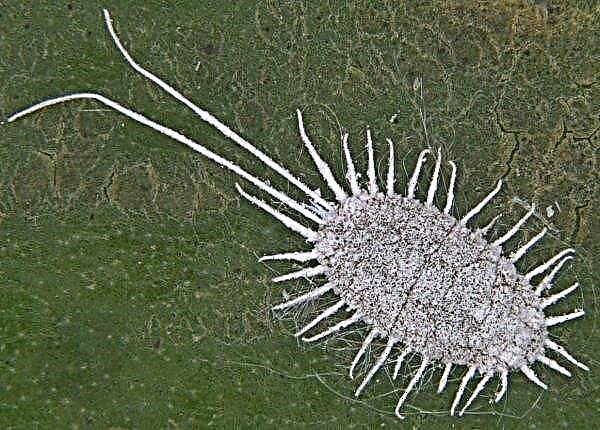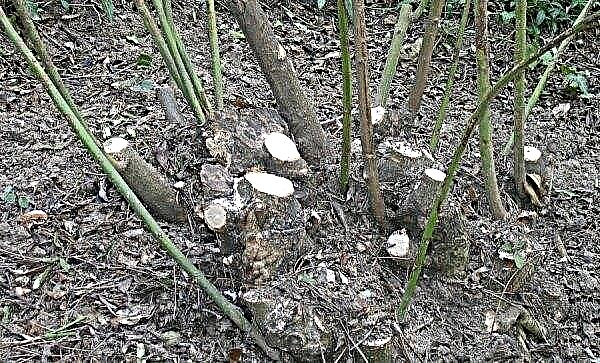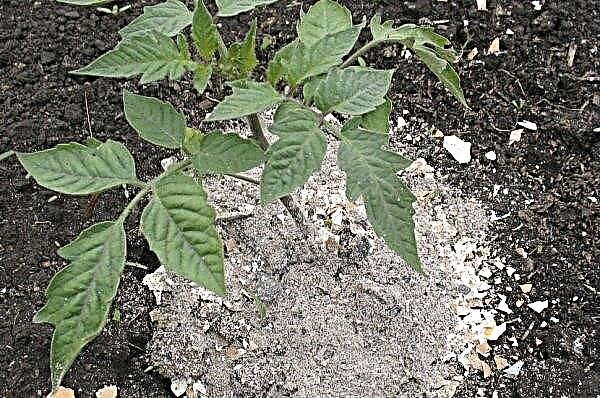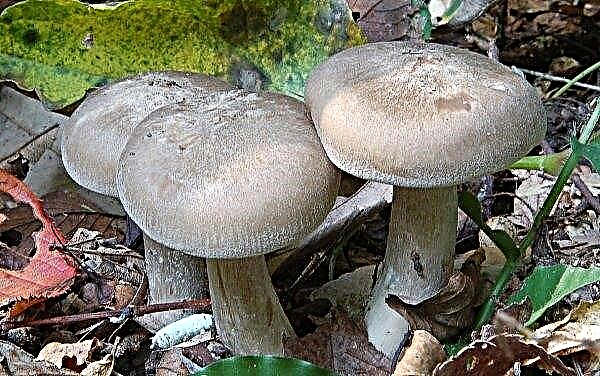Violet Magic Tulip is the pride of the collections of many gardeners. Many Senpoly lovers want to grow this variety, but before buying a plant, you need to understand the intricacies of caring for it. About what conditions Magic Tulip needs and how to grow it, read further in the article.
Botanical description of the plant
Natalia Skornyakova brought the variety of violets RM-Magic Tulip in 2017. The flower outlet is standard, up to 20 cm in size. The peduncles are still, however, they become stronger by the third flowering. Each peduncle has 4 flowers.
Did you know? Natalya Skornyakova adds the prefix RM to the names of all varieties. This is a reduction in the name and patronymic of her mother, in whose honor the breeder names the results of his work.
The flowering of the variety is unique - the buds resemble miniature tulips, their length does not exceed 4 cm. The petals are pink, the border and the eye are pale. Violet can bloom up to 10 months a year, depending on the care. The buds will blossom for the first time when the rosette is overgrown with leaves.
Conditions for successful growing at home
Variety RM-Magic Tulip is whimsical to external conditions. The correct microclimate determines how long the plant will bloom.
Location
The violet will blossom when all the leaves have grown. However, the problem is that the outlet grows foliage very slowly. To quickly open the plant buds, keep it on the shelf under special lighting. You can grow a flower on the windowsill, but in this case, flowering will come later.
Learn more about the different varieties and types of violets, namely:
Lighting
Provide flower lighting during the day for 10-12 hours. In the season of short daylight hours or when growing on a rack, keep the flowerpot under a phytolamp.
Temperature mode
Violets love warmth. A magic tulip is no exception, but the plant needs cooler conditions. The flower will keep its shape at a temperature of +19 ... + 22 ° С.
Air humidity
The optimum humidity is 50-60%. At lower moisture levels, the leaves will dry. Too humid air is fraught with wilting.
Important! Humidity of more than 70% contributes to the spread of fungus.
Basic rules for the care of violets at home
In order for the violet to actively develop and bloom, flower growers regularly water, fertilize, cut and transplant the plant.
Watering
Water the flower once every 3-4 days. The substrate should dry slightly, but not completely dry. Use only settled water to moisten the soil. Violets react negatively to impurities of salts and chlorine. For reliability, water can be boiled. When watering, the temperature should be +23 ... + 25 ° С.

Moisten the soil from a watering can. This is a convenient and simple method, but it has a significant drawback - the soil is not always saturated with water evenly. To avoid this, water the violets with the lower method. Immerse the flowerpot in a container with water and wait until the top layer of the substrate becomes wet. Let the water drain through the drain holes for 20 minutes. After that, the pot can be placed in a permanent place.
Rinse the leaves every month under a gentle stream of water - this will remove dust that prevents the flower from breathing. After bathing, be sure to pat dry the sheet plates with a paper towel. Before returning to a permanent place, let the leaves dry in warmth.
Top dressing
Violets Magic tulip is fed with liquid fertilizers, introducing them into the soil. The plant should be fed from March to September. Fertilizer frequency - 1 time in 2 weeks. As long as a rosette is formed, fertilize the flower with organic means.
For leaves to grow faster, pay attention to nitrous agents. But during flowering, nitrogen is not needed. To keep the buds on the peduncles for a long time, use potassium-phosphorus preparations.
Pruning
Periodically remove the lower leaves - violets bloom better with a three-row rosette. Do not leave wilted and dried leaf plates on the stem.
Transfer
Transplant the plant annually. Transplantation is necessary for changing the soil, which has been depleted over the year and has given all the useful elements to the plant. This is important for the rhizome, which grows and no longer fits in the old pot. The procedure is usually carried out in March.

Choose a pot 2 cm wider than the previous one. It should not be too large - the root system should completely fill the tank. Soil can be bought at the store. For violets, universal substrates for decorative deciduous plants are suitable.
If desired, gardeners make the soil themselves, mixing in the proportions of 3: 5: 1:
- peat;
- sheet earth;
- perlite.
Also add vermiculite and ash. The mixture should be approximately 10% of the total soil mass.
Perform a transplant following the instructions:
- Fill the new pot one third with expanded clay drainage.
- Fill another third of the container with the substrate.
- Carefully remove the flower from the old pot.
- If the plant is old, remove the earthen lump from the ground. Young plants can be transplanted by transshipment.
- Move the flower to a new pot.
- Fill the voids with soil.
Important! Some gardeners, when germinating the cuttings, wait for the appearance of children. In this case, the old leaf is better to separate, and only children are planted in the soil.
How to propagate at home
Violets at home propagated in two ways: by grafting and dividing the bush.
To cuttings, follow these steps:
- Cut the leaf from the second row of the peduncle at an angle of 45 °.
- Dry the slice.
- Place the handle in a container of water.
- After a while, the leaf will take root - now it can be planted in the soil.
The division of the bush is suitable for an adult plant, on which children appear in the development process.

To transplant children, you must follow the instructions below:
- Separate the children from the outlet with tweezers or a toothpick.
- Drop them on a suitable substrate.
- Cover the container with the children with a glass cap.
- Remove the cap when the new bush grows.
Possible growing difficulties
When growing, the flower grower may encounter fungal diseases.
Among them, the most common:
Fungi is evidenced by rot and plaque on different parts of the plant. To cure a violet, first transplant it into a new pot. When replanting, completely replace the soil. Affected parts of the plant should be removed. After the transplant, treat the flower with a fungicide. A good option is Fundazol. Dangerous for plants and pests. Among them are insects, ticks and worms.
On violets often wind up:
- nematodes;
- scale insects;
- false shields;
- whiteflies;
- spider mites;
- aphid;
- thrips.
Did you know? Uzambara violets were first discovered in East Africa in 1892. In 1893, plants were shown at the exhibition; by 1939, breeders bred 100 new varieties.
Remove the parasites manually, and then treat the flower with an insecticide. Violets are suitable drugs "Aktara", "Agravertin" and others on the market. Violets Magic Tulip have a unique shape of flowers. However, to see the flowering, it is necessary to fulfill all the whims of the plant, responsibly monitoring the microclimate in the room.



